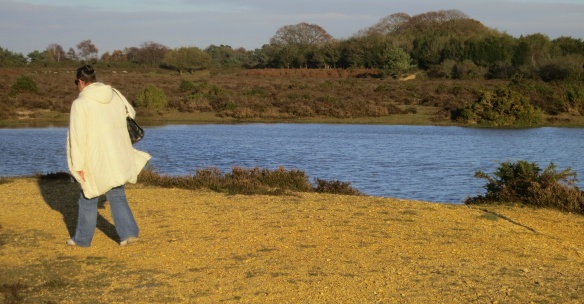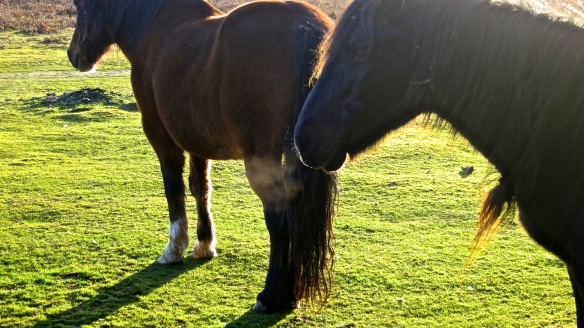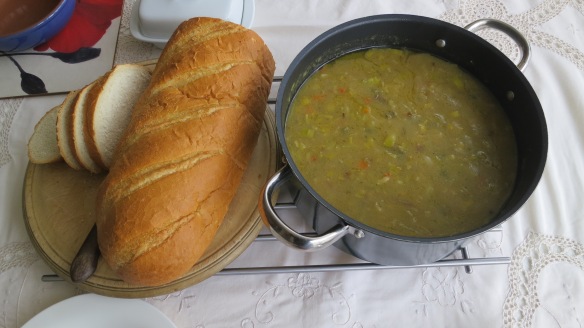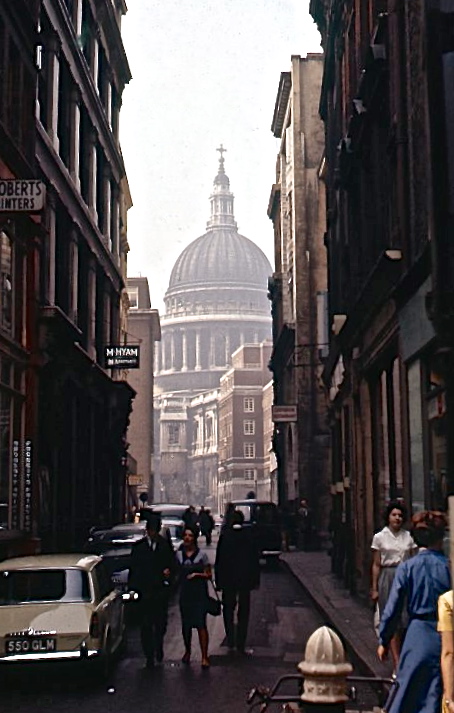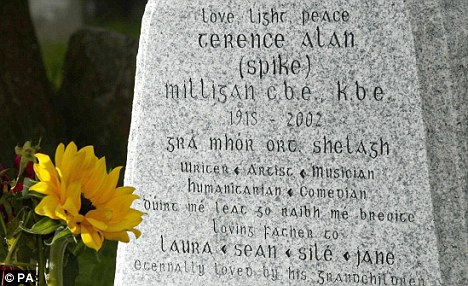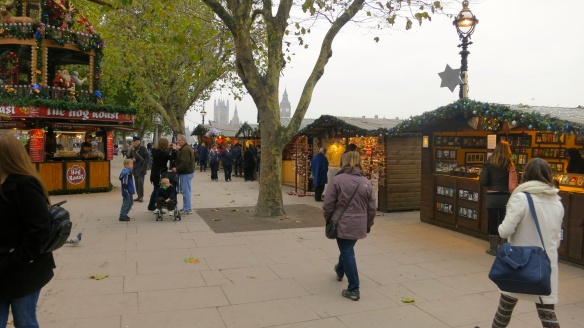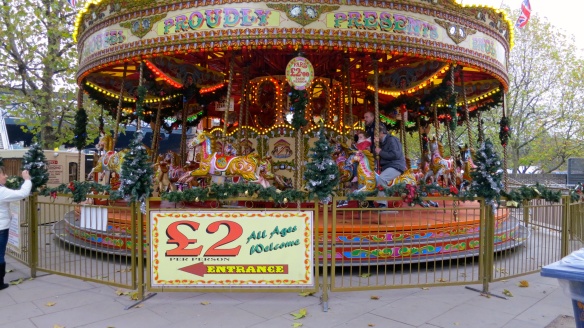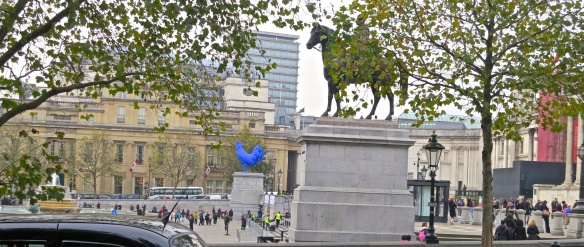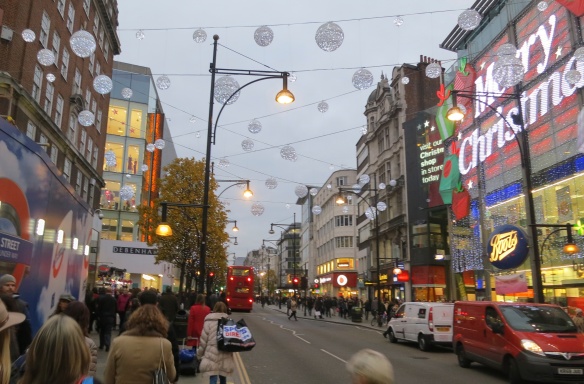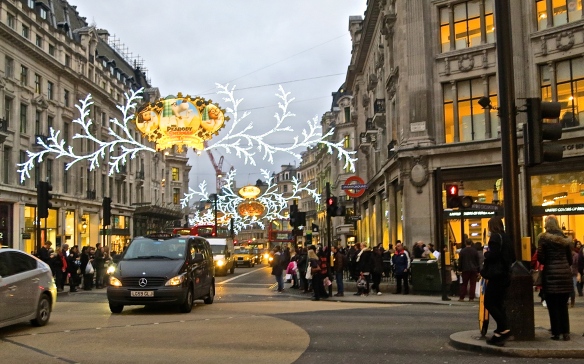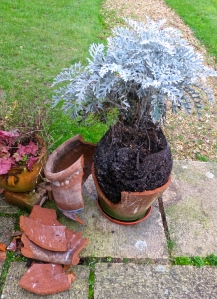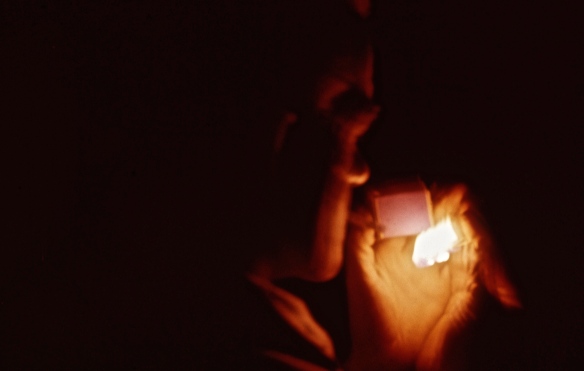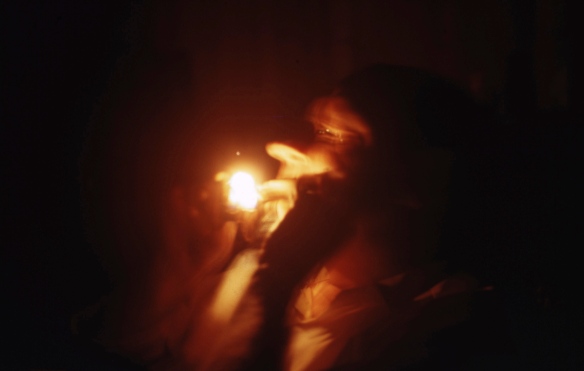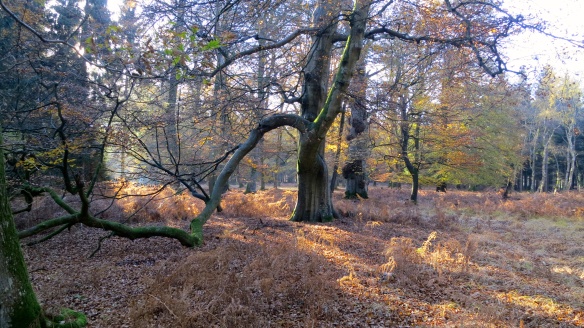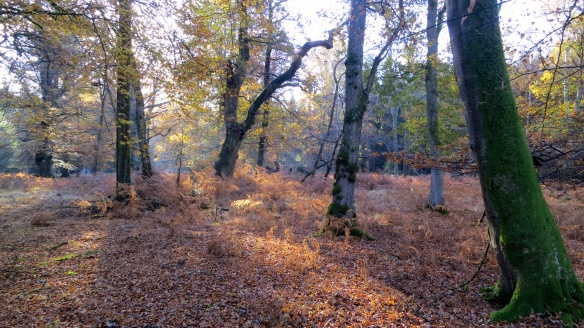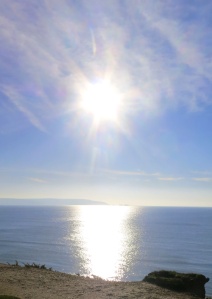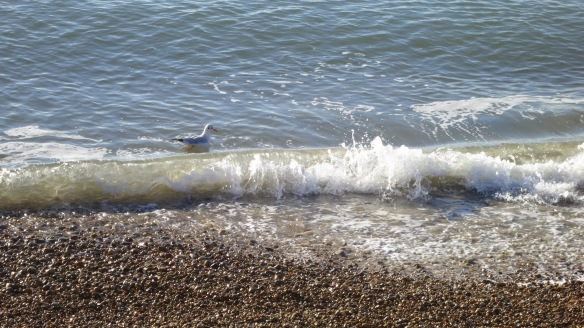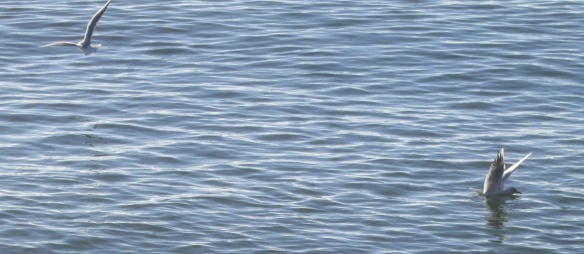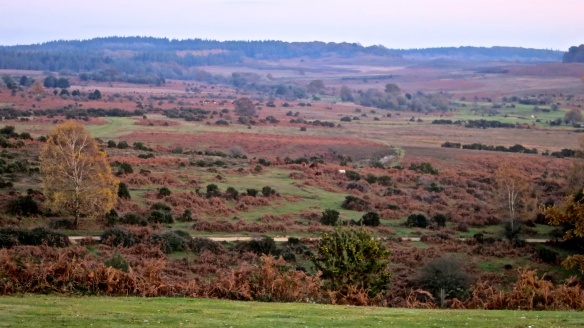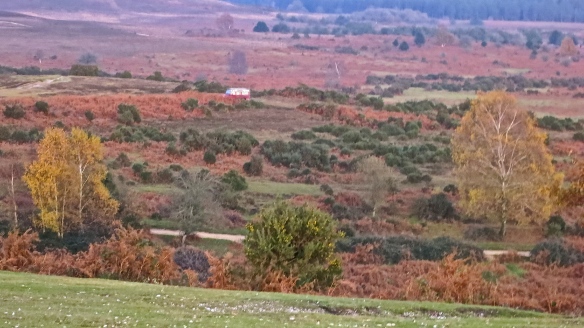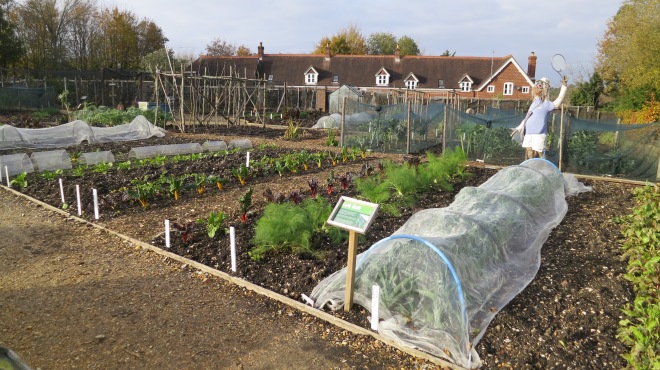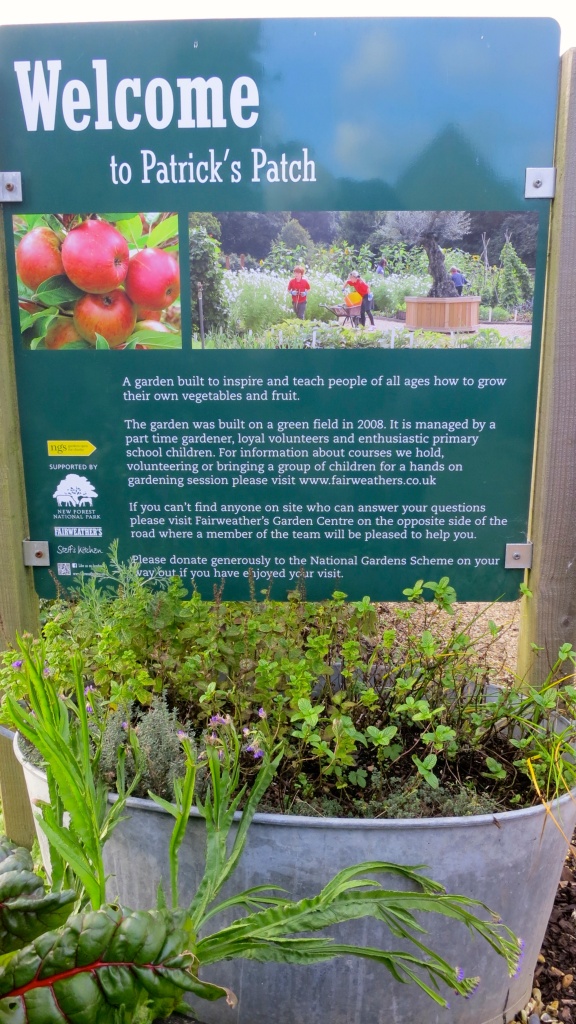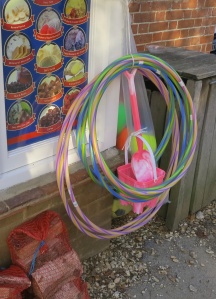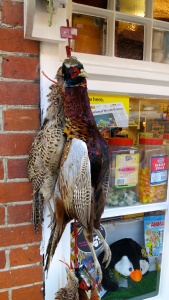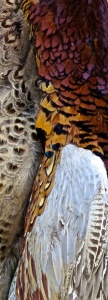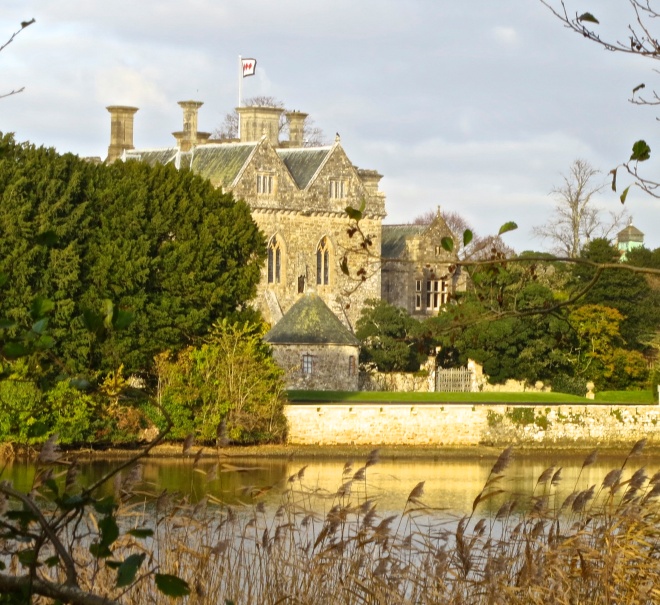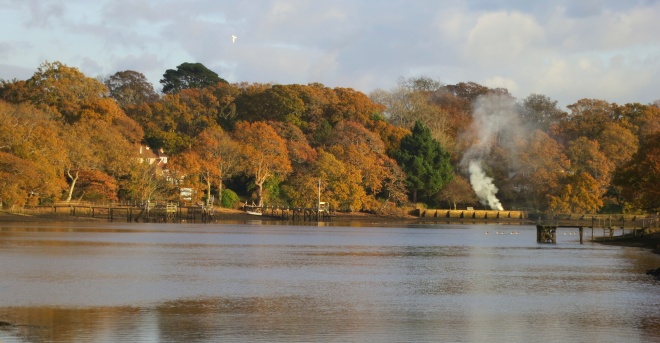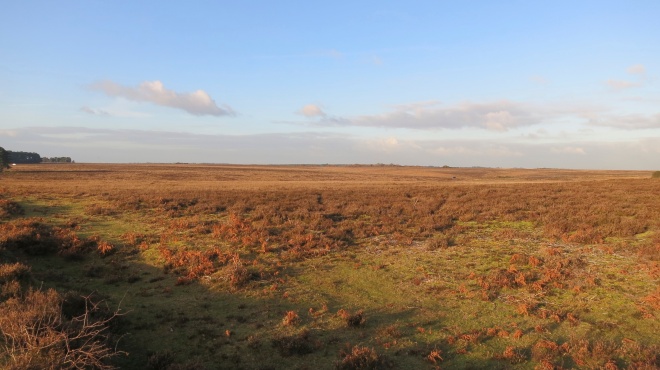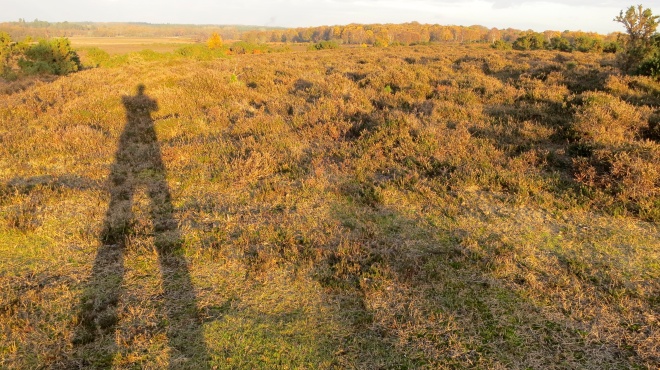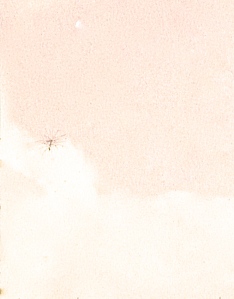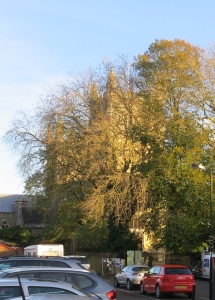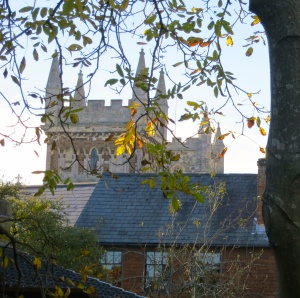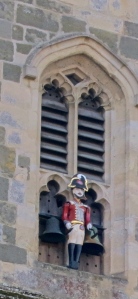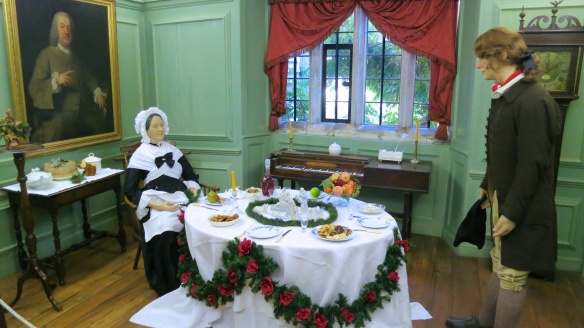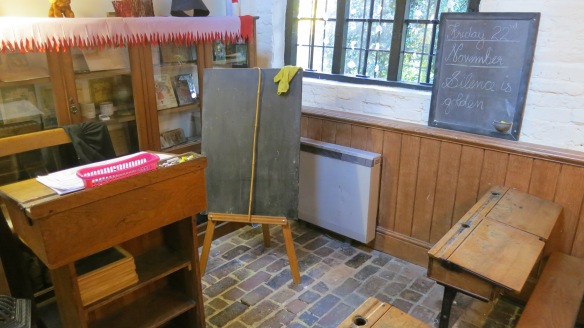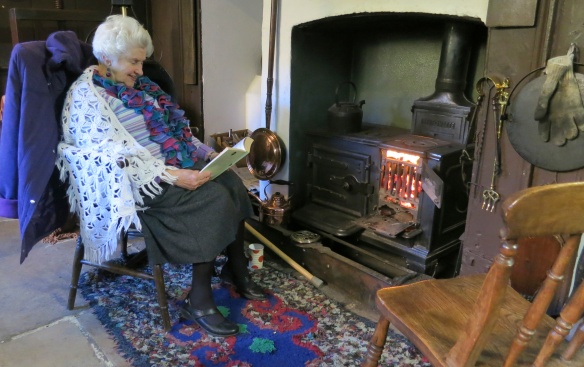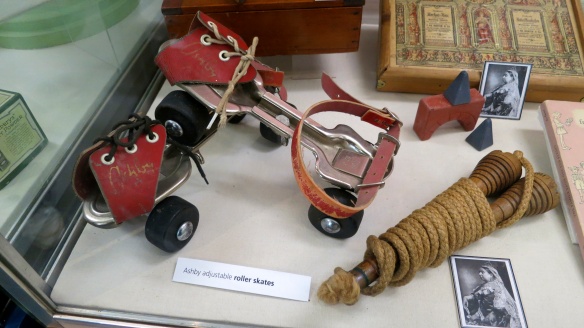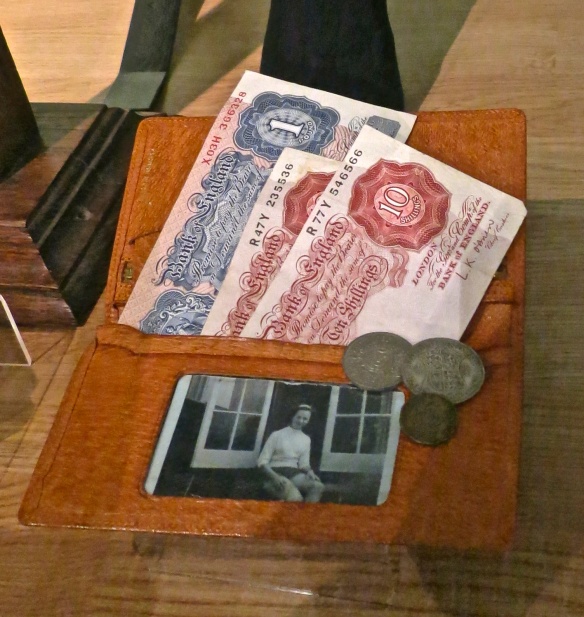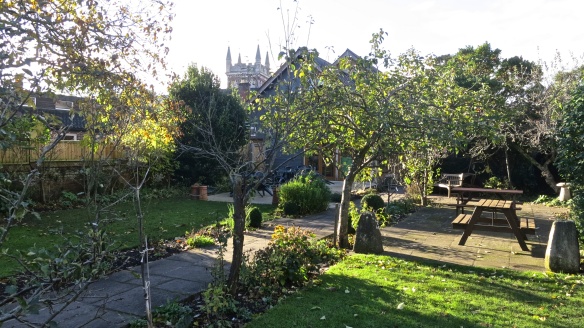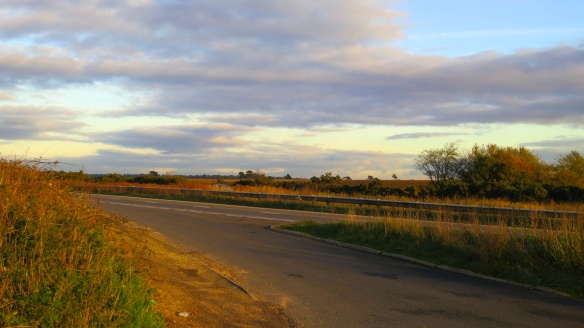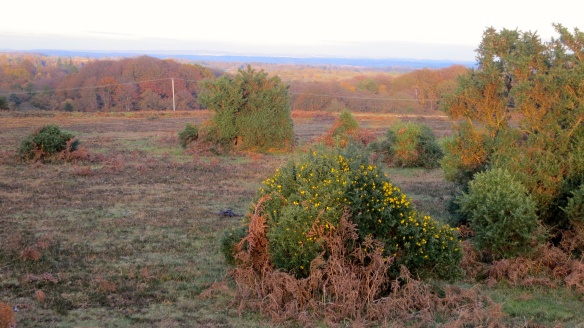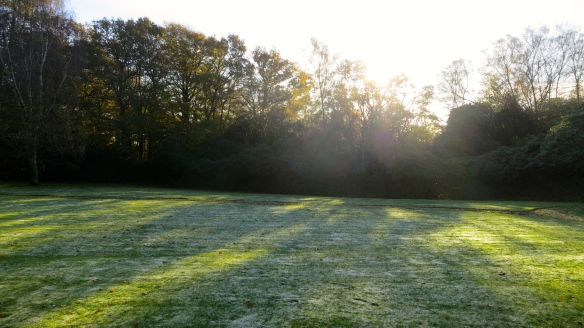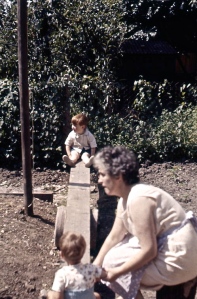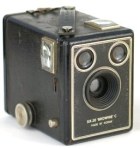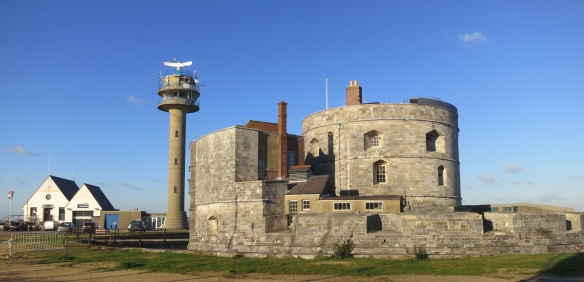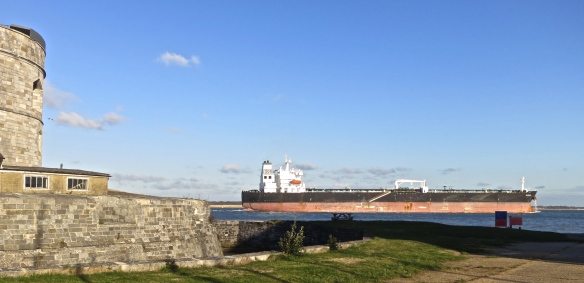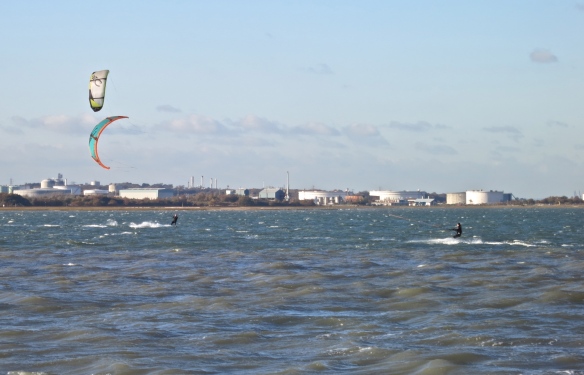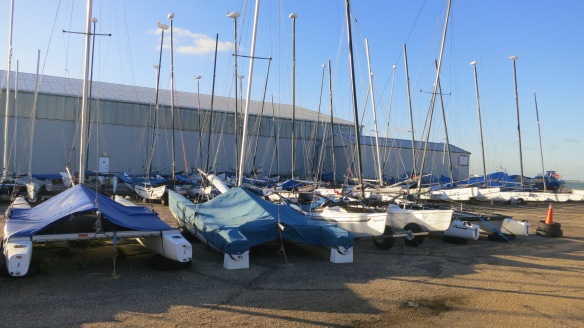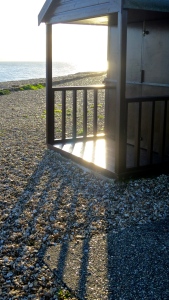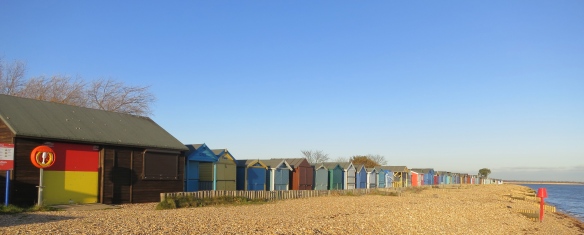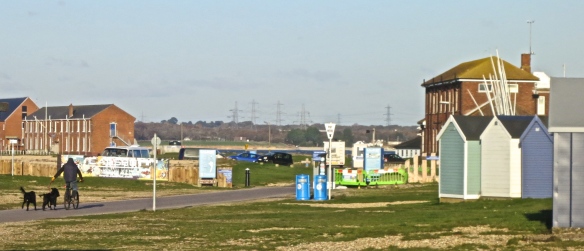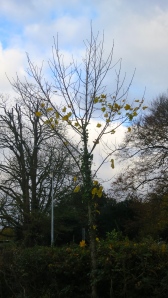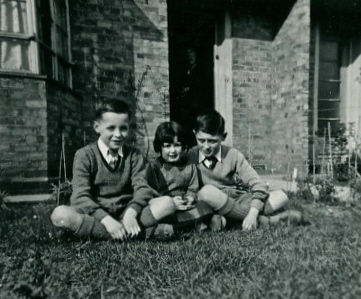A strong smell of overheated paint came from our very effective new radiator this morning so Jackie opened the sitting room windows. I wondered whether the new appliance might be a wee bit counterproductive.
I spent the morning on my laptop, effectively putting off the search for the advent calendars in the garage. We had made a start on this task yesterday evening. This involved trying to find a way through to the back of the boxes of books placed in there by Globe Removals on 2nd September. As it turned out, we had in fact extracted the correct calendar container without realising it, so Jackie fished the required items out straight away.
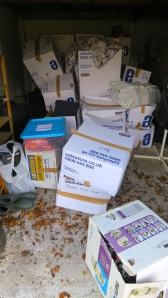 Unfortunately we discovered that, because of the uneven weights of the book boxes, there were a number of accidents waiting to happen. In truth, I wasn’t sure I’d be able to lift them. With Jackie’s help, it proved to be entirely possible to tidy the stacks, and in the process, I unearthed most of my photo albums.
Unfortunately we discovered that, because of the uneven weights of the book boxes, there were a number of accidents waiting to happen. In truth, I wasn’t sure I’d be able to lift them. With Jackie’s help, it proved to be entirely possible to tidy the stacks, and in the process, I unearthed most of my photo albums.
My archival system is such that it is sometimes easier to locate a photograph from the print in one of the albums, which will then tell me, with any luck, whether I need to find a negative or a slide. Or maybe, as today, I just wanted a suitable picture of a subject and it didn’t really matter exactly when it had been taken. In this manner, the finding of the albums made it possible for me to locate a shot of Michael and his dog Piper. 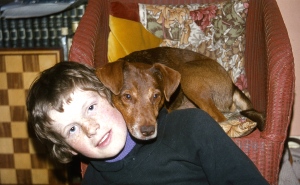 I wanted this to illustrate earlier posts about the boy and his foundling, especially one concerning the advent of the dog. It was a colour slide taken in Horse & Dolphin Yard in June 1977. I didn’t need to do any more than take out a few dust specks.
I wanted this to illustrate earlier posts about the boy and his foundling, especially one concerning the advent of the dog. It was a colour slide taken in Horse & Dolphin Yard in June 1977. I didn’t need to do any more than take out a few dust specks.
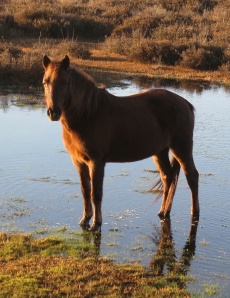 It being another glorious autumn day we drove up to the Andrew’s Mare car park and both walked a tour of the ponds. Amazingly, but for a pony slaking its thirst and having a paddle, we had this usually quite crowded spot to ourselves.
It being another glorious autumn day we drove up to the Andrew’s Mare car park and both walked a tour of the ponds. Amazingly, but for a pony slaking its thirst and having a paddle, we had this usually quite crowded spot to ourselves. 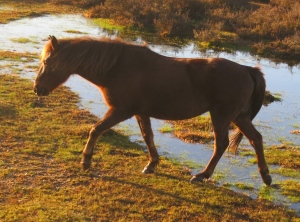
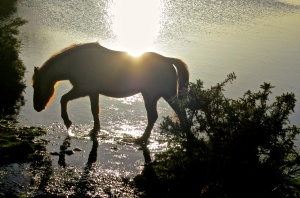 The pony showed its displeasure at receiving my attention, by walking up out of one pool and, attempting to blind me by the sun, stepping into another.
The pony showed its displeasure at receiving my attention, by walking up out of one pool and, attempting to blind me by the sun, stepping into another.
The animal could not have known that its peaceful ablutions were soon to be disturbed by a band of marauding dogs of varying breeds that were being decanted from a number of vehicles as we returned to the car park. We had just missed dog walkers’ rush hour. Whilst it is very encouraging that these animals have the area in which to romp and chase sticks, it is a great shame that the beautiful spot is fouled by heaps of their excreta that their owners have not seen fit to remove. We know that pony droppings are found everywhere in the forest, but their recycled material is not the same as that of carnivores.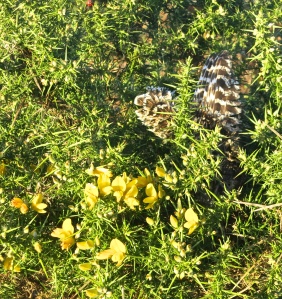
The remnants of a buzzard caught in a gorse bush blended rather well with the yellow flowers.
Throughout this walk we heard a steady roar from the A31. 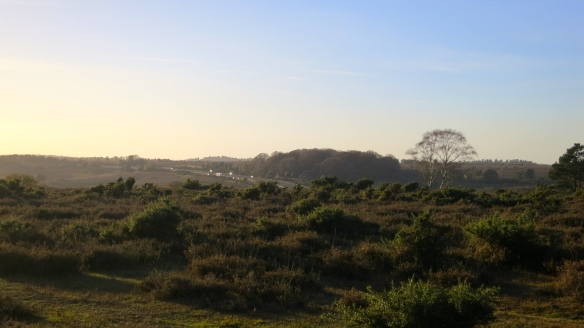 The sun glinted on the vehicles which could be seen from just one point, demonstrating that we were standing further away from the road than we would be in our own garden. Nevertheless we do not hear it at home.
The sun glinted on the vehicles which could be seen from just one point, demonstrating that we were standing further away from the road than we would be in our own garden. Nevertheless we do not hear it at home.
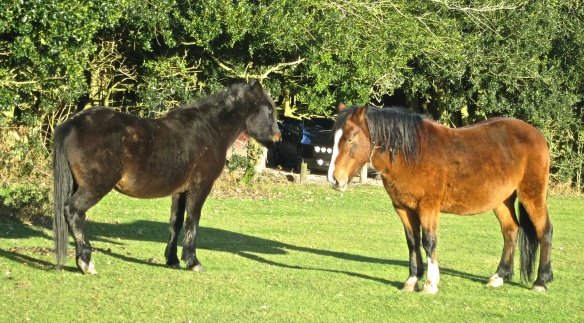 When we arrived at the car park we noticed what Jackie described as ‘bookends’ in equine form.
When we arrived at the car park we noticed what Jackie described as ‘bookends’ in equine form. 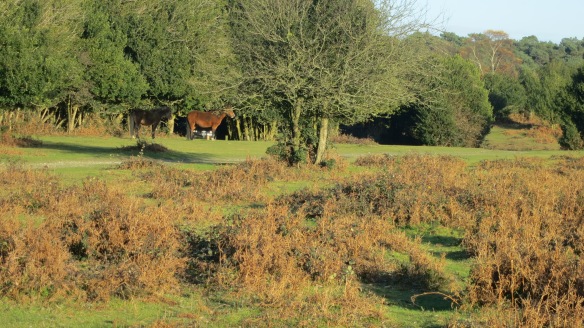 Apart from one which turned its back on its companion under Jackie’s scrutiny, neither of these creatures moved a muscle, not even an eyelid, for the whole of our period at the site.
Apart from one which turned its back on its companion under Jackie’s scrutiny, neither of these creatures moved a muscle, not even an eyelid, for the whole of our period at the site.
It is now cold enough for the ponies’ breath once more to form visible swirls of steam. That way we could tell that they were real.
From here we drove, via Emery Down and Bolderwood, under the A31 to the villages to the north, and back via Godshill along Roger Penny Way, catching the splendid sunset as we motored.
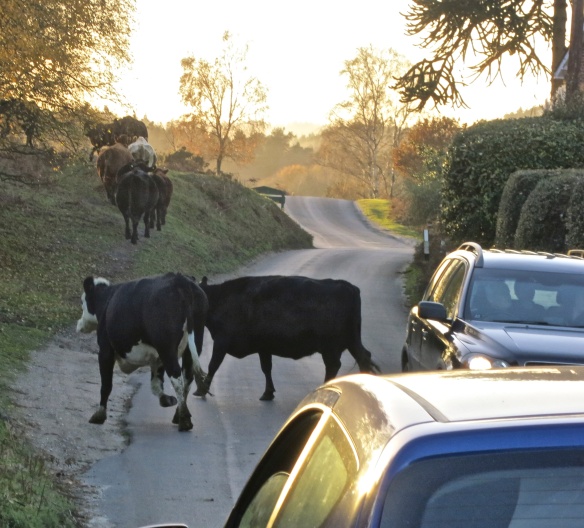 A galloping cow, for those of you who have never seen one, is not a pretty sight.
A galloping cow, for those of you who have never seen one, is not a pretty sight. 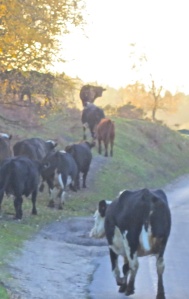 Ungainly at the best of times these milk suppliers with bodies too large for their slender legs, and bones sticking out all over the place, lollop along from side to side, seeming at any moment likely to collapse like grounded kites. It is even less attractive when there is a large herd of them thundering down from one high field, stampeding across the road in the midst of bewildered traffic, and climbing a well-trodden footpath on the other side. We know, because we had plenty of time to sit and await their
Ungainly at the best of times these milk suppliers with bodies too large for their slender legs, and bones sticking out all over the place, lollop along from side to side, seeming at any moment likely to collapse like grounded kites. It is even less attractive when there is a large herd of them thundering down from one high field, stampeding across the road in the midst of bewildered traffic, and climbing a well-trodden footpath on the other side. We know, because we had plenty of time to sit and await their 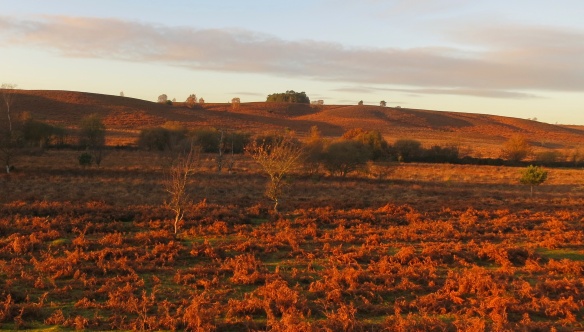 departure when they did just that as we approached Ibsley Common, incidentally owned by the National Trust. Maybe, unlike the ponies, they had run out of steam once they had crossed the road, because their uphill climb was more laboured.
departure when they did just that as we approached Ibsley Common, incidentally owned by the National Trust. Maybe, unlike the ponies, they had run out of steam once they had crossed the road, because their uphill climb was more laboured.
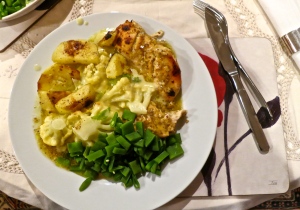 Early this evening we dined on another of Jackie’s beautifully presented symphonic masterpieces; a study in ochre and cream with a dash of green, represented by chicken marinaded and baked in mustard and lemon sauce, cauliflower cheese, sautéed potatoes and nuggets of runner beans. It tasted as good as it looks. I have to admit that I served myself. Had Jackie done so, there would have been no sauce splashed on the rim of the plate, and one of the beans would not have broken free. I drank some more of the Valdepenas Gran Familia reserve 2007, whilst Jackie’s choice was Isla Negra sauvignon blanc reserve 2012.
Early this evening we dined on another of Jackie’s beautifully presented symphonic masterpieces; a study in ochre and cream with a dash of green, represented by chicken marinaded and baked in mustard and lemon sauce, cauliflower cheese, sautéed potatoes and nuggets of runner beans. It tasted as good as it looks. I have to admit that I served myself. Had Jackie done so, there would have been no sauce splashed on the rim of the plate, and one of the beans would not have broken free. I drank some more of the Valdepenas Gran Familia reserve 2007, whilst Jackie’s choice was Isla Negra sauvignon blanc reserve 2012.
